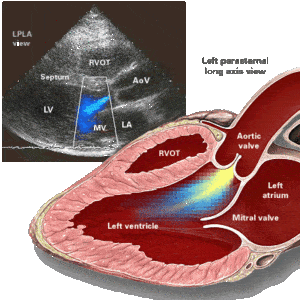A urinary tract infection (UTI) is an infection of the kidneys, ureters, bladder, or urethra. The majority of urinary tract infections affect the bladder and urethra.
Women are more likely to have a urinary tract infection than males. A bladder-only infection can be uncomfortable and irritating. Nonetheless, if a UTI spreads to the kidneys, severe repercussions might occur.
Urinary tract infections are normally treated with antibiotics. However, there are measures you may do to prevent UTIs from occurring in the first place.
Risk Factors
Some individuals are at a greater risk of developing a urinary tract infection (UTI). Urinary tract infections are more prevalent in women because their urethras are shorter and closer to the rectum. This facilitates bacterial entry into the urinary system.
Other risk factors for urinary tract infections:
- An earlier UTI
- Sexual behavior
- Alterations in the vaginal microorganisms, often known as vaginal flora. Menopause or the use of spermicides, for instance, can cause these bacterial alterations.
- Pregnancy
- Age (older adults and young children are more likely to get UTIs)
- Urinary tract structural issues, such as an enlarged prostate
- Poor hygiene, for instance in potty-training children

Signs and symptoms of urinary tract infection
Among the general signs of a UTI are:
- A burning sensation when urinating
- Frequent or urgent urge to urinate, yet little urine is produced
- Cloudy, black, red, or strange-smelling pee
- Feeling weary or unsteady
- Fever or shivering (a sign that the infection may have reached your kidneys)
- Pain or pressure in the lower abdomen or back
Children
Children with urinary tract infections may also:
- Have a high fever — when you touch your child’s neck, back, or stomach, they feel hotter than usual.
- Appear generally ill – infants and young children may exhibit irritability and improper feeding or eating.
- Wet the mattress or yourself
- Be sick
Elderly
People who are elderly, feeble, or have a urinary catheter require an urine catheter.
In older, weak individuals with memory, learning, and concentration issues (such as dementia) and individuals with a urinary catheter, additional UTI symptoms may include:
- Behavioral changes, such as acting agitated or confused (delirium)
- Wetting themselves more frequently than normal (incontinence)
- Recent trembling or shaking (rigors)
Diagnosis
A doctor will typically diagnose a UTI by evaluating a urine sample for the presence of white blood cells, red blood cells, and bacteria after asking a patient about their symptoms.
In certain instances, a physician may culture the urine to determine the type of bacteria causing an infection.
If a patient has recurring UTIs, a physician may order additional diagnostic tests to identify whether anatomical or functional abnormalities are to blame. These exams might include:
- Diagnostic imaging entails evaluating the urinary tract with ultrasound, CT and MRI scans, radiation tracking, or X-rays.
- Urodynamics: This test assesses the efficiency with which the urinary system retains and excretes urine.
- Cystoscopy enables the physician to see within the bladder and urethra by inserting a long, thin tube with a camera lens through the urethra.
When to seek Treatment
Consult your healthcare provider if you experience signs of a urinary tract infection (UTI) or any other severe or worrying symptoms.
The majority of UTIs can be treated at home with antibiotics prescribed by a physician. However, hospitalization may be necessary in certain instances.
Treatment
The treatment of a urinary tract infection depends on whether it is:
- Bacterial (most common)
- Viral
- Fungal
Your doctor will be able to tell which it is based on the findings of your tests.
Antibiotics are utilized to treat bacterial UTIs. Antiviral medicines are used to treat UTIs caused by viruses. Antiviral cidofovir is frequently used to treat viral UTIs. Antifungal medicines are used to treat UTIs caused by fungi.
Antibiotics for a urinary tract infection
Typically, the type of antibiotic used to treat a bacterial UTI varies on which portion of the urinary tract is affected.
UTIs of the lower tract are typically treatable with oral antibiotics. UTIs of the upper tract require intravenous antibiotics. These antibiotics are administered intravenously.
Occasionally, microorganisms develop antibiotic resistance. To limit the danger of antibiotic resistance, your physician will likely prescribe the shortest period of treatment possible. Typically, treatment lasts no longer than one week.
The results of your urine culture can help your doctor choose which medication will be most effective against the type of bacteria causing your infection.
Antibiotic alternatives for bacterial UTIs are being investigated. Eventually, it may be possible to cure bacterial UTIs without antibiotics using cell chemistry to alter the relationship between the host and the bacterium.
Natural treatments for a UTI
There are no home cures that can cure a UTI, but there are several things you may do to improve the effectiveness of your prescription.
These home cures for UTIs, such as drinking extra water, may speed up the body’s ability to eliminate the infection.
Cranberries
Cranberry juice or cranberries do not treat an established UTI. However, a chemical in cranberries may inhibit the attachment of some types of bacteria that can cause a bacterial UTI to the lining of your bladder. This may help avoid UTIs in the future.
Cranberries are a popular treatment, although the data on their efficacy on UTIs is inconclusive. More conclusive research is required.
Nevertheless, according to the American Urological Association, practitioners might offer cranberry juice to patients to avoid recurring UTIs. However, they emphasize that there is little assurance that this will succeed.
After Therapy
Antibiotics typically alleviate the symptoms of UTIs within a few days. As long as all UTI symptoms have subsided following the course of medication, a second urine culture is not necessary to confirm that the infection is gone.
Depending on the circumstances, if you have a complex UTI, you may require a urine culture to demonstrate that the infection is gone. If your symptoms persist while taking antibiotics, you may require a longer course of antibiotics, a new medication, or a different method of administration.
Between 20% and 40% of women with a UTI will develop another infection. Men are less likely to develop a UTI to begin with. However, if they develop one, they are likely to develop another as the bacteria tend to lurk within the prostate.
If you experience UTIs frequently (three or more per year), you should consult your doctor. To determine the cause, your doctor may need to conduct more tests (such as observing whether the bladder empties). If you continue to develop UTIs, a lengthier course of low-dose antibiotics or taking an antibiotic after sexual activity may be beneficial. Your healthcare physician may also recommend self-testing procedures that allow you to diagnose and treat UTIs at home.
Complications of a urinary tract infection
Complications of UTIs are uncommon, but they can be severe and necessitate rapid medical attention. They typically affect persons with diabetes, a compromised immune system, men with recurrent UTIs, or pregnant women.
If a UTI is not treated, germs can spread to the kidneys, causing infection, damage, and even kidney failure. It is possible to get blood poisoning when the infection moves from the kidneys to the bloodstream.
If the infection spreads to the kidneys, severe fever, back discomfort, diarrhea, and vomiting may occur. If you have these symptoms, you must consult a doctor immediately.
Prevention of urinary tract infections
There are several measures that can be taken to prevent urinary tract infections. For example:
- When washing themselves, women should always wipe from front to back to avoid bacteria from entering the urethra.
- Practice proper hygiene by keeping your genitalia dry and clean.
- Urinate routinely
- Always totally empty your bladder when peeing.
- After sexual activity, empty your bladder to remove any bacteria that may have entered the urethra.
- Stay hydrated by consuming copious amounts of water.
There is some evidence that cranberries lessen the likelihood of bacteria attaching to bladder cells, so if you are prone to urinary tract infections, you may wish to consume cranberry juice on a regular basis. (If you are using a blood-thinning medication/anticoagulant such as Warfarin, you should not consume cranberry juice because it can increase the risk of bleeding.)



